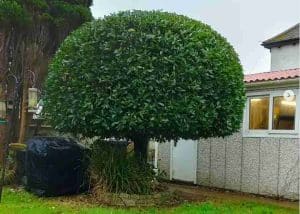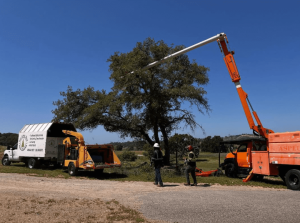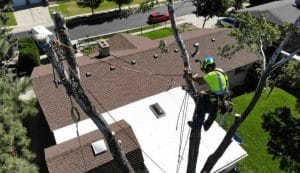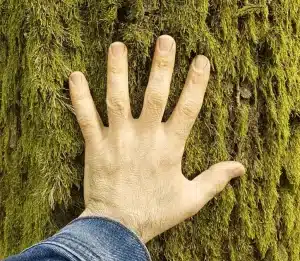Are dead trees dangerous? Yes, and far more than you might think. A dead tree may look harmless, but it can collapse without warning, cause thousands in property damage, injure someone nearby, attract pests, or even fuel a fire. Once a tree loses its structural integrity, it becomes unpredictable especially in storms or dry weather. That’s why it’s critical to understand the risks dead trees pose and act before something goes wrong.
In this article, you’ll learn exactly why dead trees are hazardous, how to recognize one before it falls, and what can happen if you ignore the warning signs. By the end, you’ll know how to keep your property safe—and when it’s time to call a professional tree removal service.
Table of Contents
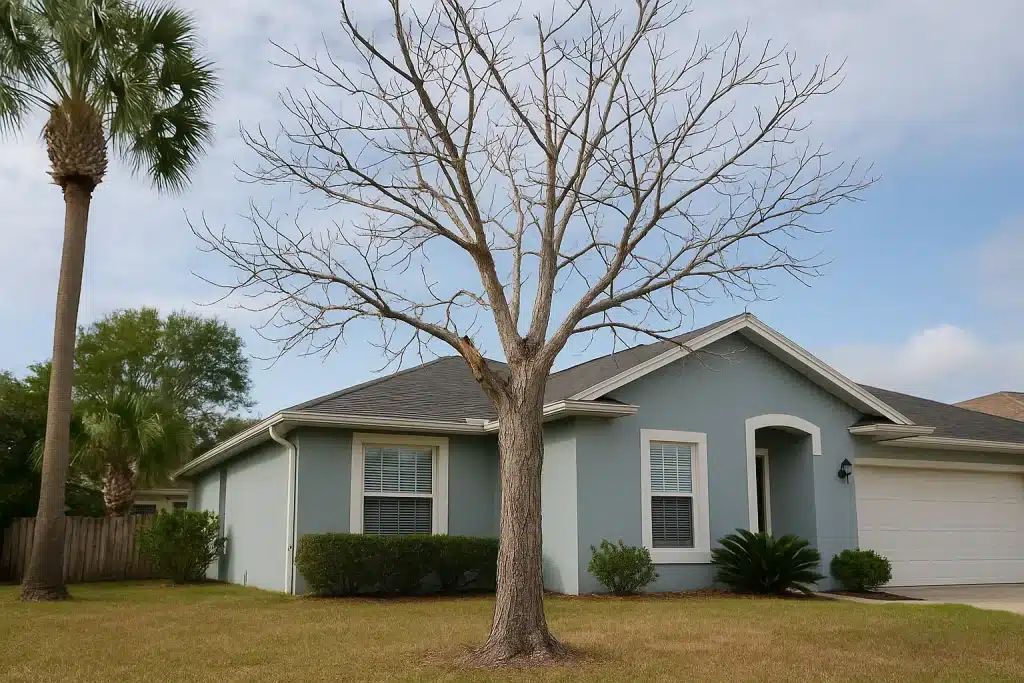
Why Dead Trees Are a Hidden Threat
When a tree dies, it loses the strength and flexibility that keep it stable. Without living roots or healthy branches, it becomes weak and unpredictable. This makes dead trees a danger, especially during storms or high winds. They can also attract pests that harm your home or become a fire hazard in dry conditions. Ignoring a dead tree puts your property, safety, and peace of mind at risk. Understanding these threats helps you decide whether it’s time to act before a small issue turns into a major problem.
How to Spot a Dead or Dying Tree
Before exploring the risks, it’s important to know if a tree is dead or dying. Here are clear signs to look for:
- No leaves or thin foliage: A tree that doesn’t grow leaves in spring or loses them early is likely unhealthy.
- Brittle branches: If branches break easily or appear dry and cracked, the tree is struggling.
- Peeling bark or cracks: Bark falling off or deep cracks in the trunk mean the tree is no longer alive.
- Fungus or mushrooms: Growth at the tree’s base often signals rotting roots.
- Leaning trunk: A tree tilting heavily to one side may be at risk of falling.
If you notice these signs, the tree needs attention. Identifying these issues early can prevent bigger problems and keep your yard safe.
The Serious Risks of Keeping Dead Trees
Dead trees can cause significant harm if left standing. Let’s explore the specific dangers to your home, family, and finances so you understand why acting quickly is crucial.
1. Falling Trees Can Damage Your Property
A dead tree can fall and cause major damage to your home. Weak and unstable, these trees are prone to collapsing during storms, high winds, or even on a calm day if the roots are decayed. When a tree falls, it can:
- Crash through your roof, leading to costly repairs.
- Break walls, windows, or chimneys.
- Destroy outdoor structures like fences, sheds, or patios.
For example, a fallen tree can result in $5,000 to $20,000 in home repair costs, depending on the extent of the damage. If it hits your car or garage, expenses climb even higher. Removing a dead tree before it falls prevents these costly surprises and protects your property.
2. Safety Hazards for Your Family and Neighbors
Dead trees pose a direct threat to people. Falling branches or entire trees can injure anyone nearby, whether it’s kids playing in the yard or neighbors walking by. Heavy branches, sometimes called “widowmakers,” can break off without warning, especially in windy conditions. In rare but tragic cases, falling trees have caused serious injuries or worse.
If a dead tree falls onto a neighbor’s property, you could be responsible for damages, especially if the tree was visibly unhealthy. Taking action now ensures the safety of your family and community, giving you peace of mind.
3. Pests and Diseases That Harm Your Home
Dead trees attract pests like termites, carpenter ants, and beetles, which thrive in decaying wood. These insects can easily spread to your home’s wooden structures, leading to expensive pest control treatments or structural repairs. A dead tree can also harbor fungal diseases that infect nearby healthy trees or plants, damaging your landscaping. Removing the tree stops these problems at their source, protecting your home and yard.
4. Fire Risks in Dry Conditions
In dry climates or during drought seasons, dead trees become a fire hazard. Their dry wood ignites easily, and a small spark from a lightning strike or backyard fire pit could lead to disaster. This is especially concerning in wildfire-prone areas. Removing dead trees reduces this risk, keeping your property safer during fire season.
5. Reduced Property Value and Curb Appeal
A dead tree doesn’t just threaten safety—it hurts your home’s appearance and value. If you plan to sell, buyers may see a dead tree as a costly problem to fix, lowering their interest. A well-maintained yard shows a cared-for home, while a dead tree suggests neglect. Removing it improves your property’s look and makes it more appealing to potential buyers.
What Happens If You Ignore a Dead Tree?
Leaving a dead tree standing might seem like a way to save money now, but the risks far outweigh the short-term savings. Here’s what could happen if you delay:
- High Repair Costs: A fallen tree could cause tens of thousands in damages, far more than the typical $500-$2,000 cost of professional removal.
- Insurance Issues: Some insurance policies won’t cover damage from a dead tree if it was known to be a hazard, leaving you to pay the full cost.
- Legal Problems: If a tree falls on a neighbor’s property, you could face lawsuits or disputes, especially if the tree was clearly dead.
- Constant Worry: Living with the fear of when or if the tree will fall can cause ongoing stress.
Taking action now avoids these problems and saves you from bigger challenges later. Removing a dead tree is a smart choice for your home’s safety and your peace of mind.
How to Safely Remove a Dead Tree
Removing a dead tree is not a task for beginners—it’s dangerous and requires professional expertise. Here’s how to handle it safely and effectively:
1. Confirm the Tree’s Condition
Start by checking for signs of a dead or dying tree, like those listed earlier. If you’re unsure, consult an arborist to assess the tree’s health and determine if removal is necessary. Early action prevents risks from escalating.
2. Hire a Professional Tree Removal Service
For safety and efficiency, choose a licensed and insured tree removal company. Look for professionals who:
- Carry proper insurance to cover any accidents.
- Use modern equipment for safe and efficient removal.
- Offer stump removal if you want the tree completely gone.
Getting multiple quotes ensures a fair price. Expect to pay $500-$2,000, depending on the tree’s size, location, and the job’s complexity.
3. Check Local Rules
Some areas have regulations about tree removal, especially for large trees or those in protected zones. Check with your local government to see if you need a permit. A professional service can often help with this process.
4. Plan for Stump Removal or Landscaping
After the tree is removed, decide what to do with the stump. Leaving it can attract pests or make your yard look untidy. Stump grinding or removal adds to the cost but prevents future issues. You might also consider planting a new tree or updating your landscaping to enhance the space.
The Benefits of Removing a Dead Tree
Removing a dead tree does more than eliminate risks—it brings real advantages to your home and lifestyle. Here’s what you gain:
- Peace of Mind: No more worrying about a tree falling unexpectedly.
- Safer Property: Protect your family, neighbors, and home from accidents.
- Improved Curb Appeal: A cleaner, healthier yard enhances your home’s appearance and value.
- Long-Term Savings: Avoid costly repairs or pest control by acting early.
- Healthier Yard: Prevent pests and diseases from spreading to other plants.
Removing a dead tree is an investment in your home’s safety, beauty, and value, offering benefits that far outweigh the cost.
How to Keep Your Trees Healthy
After removing a dead tree, you’ll want to prevent the problem from happening again. Here are simple ways to maintain healthy trees:
- Water Consistently: Ensure trees get enough water, especially during dry periods.
- Prune Regularly: Trim dead or weak branches to promote strength and prevent disease.
- Monitor for Pests: Check for signs of insects or fungus and address them quickly.
- Choose Suitable Trees: Plant species that thrive in your climate and soil for better long-term health.
- Consult an Arborist: Regular checkups from a tree expert can catch issues early.
Proactive care keeps your yard safe, beautiful, and free of future hazards.
Take Action to Protect Your Home
Dead trees are more than a landscaping issue—they’re a serious risk that could lead to thousands in damages, threaten your family’s safety, or lower your home’s value. By recognizing the dangers and acting quickly, you can prevent these problems. Check your yard for signs of dead or dying trees, and if you spot trouble, contact a local tree removal professional to handle it safely. Removing a dead tree now protects your home, saves money in the long run, and restores your peace of mind. Don’t wait for a disaster—take the first step today to keep your property safe and beautiful.
FAQs
Are dead trees dangerous to houses?
Yes, dead trees can fall without warning, damaging your home, car, or yard. They’re unstable, especially during storms, and should be removed quickly.
How do I know if my tree is dead?
Dead trees often have no leaves, cracked bark, brittle branches, fungus at the base, or a leaning trunk. An arborist can confirm if removal is needed.
Do dead trees attract pests?
Yes, dead trees attract termites, beetles, and carpenter ants. These pests can spread to your home and cause serious damage if not handled early.
Can dead trees cause fires?
Dry dead trees are highly flammable and can ignite easily in hot or dry conditions. They’re a major fire hazard, especially in wildfire-prone areas.
What happens if I don’t remove a dead tree?
Leaving it puts your home at risk of falling limbs, pest invasion, fire, and legal trouble if it damages nearby property. Removal avoids bigger costs.

